#Cosmetic Market Shares
Text
Cosmetic Market Size and Growth Prospects: A Deep Dive Analysis

The Growing Cosmetics Market Driven by Higher Spend on Premium Beauty Products
The global cosmetics market is estimated to be valued at US$ 438.5 Bn in 2024 and is expected to exhibit a CAGR of 5.3% over the forecast period 2023 to 2030. Cosmetics refer to a range of care products used to enhance the appearance or odor of the human body. They include skin care products, hair care products, makeup, perfumes, and other care products. The high demand for premium cosmetics products that enhance beauty and pamper the skin and hair is driving significant market opportunities.
Key Takeaways
a
Key players operating in the cosmetics market are L’Oreal S.A, Unilever plc., The Procter & Gamble Company, The Estee Lauder Companies Inc., Shiseido Company, Limited, LVMH Moët Hennessy, Kao Corporation., Oriflame Holding AG, Avon Products Inc., and Revlon, Inc. Cosmetics companies are witnessing higher demand due to growing consciousness among consumers regarding appearance and persona. The increasing spending power is encouraging consumers to spend more on premium beauty products. Technological advancements have revolutionized the cosmetics industry with the introduction of natural and organic products addressing sustainability and wellness needs.
Market Trends
The growing popularity of organic and natural cosmetic products is one of the key trends being witnessed in the market. Consumers are increasingly looking for products formulated with natural ingredients that are less toxic and have fewer side effects. Another major trend is the rising preference for multifunctional cosmetic products allowing users to perform multiple tasks. Products with anti-aging, sun protection, moisturizing and other benefits are gaining widespread acceptance.
Market Opportunities
The male grooming category presents significant growth opportunities for cosmetics players. While the market has traditionally been dominated by women consumers, men are also stepping up their spending on personal care. Another key opportunity lies in customized cosmetics developed specifically for different geographic regions, cultures and skin types using advanced research and analytics. Players investing in customized solutions can gain an edge.
Impact of COVID-19 on Cosmetics Market growth
The COVID-19 pandemic has significantly impacted the growth of the global cosmetics market. During the initial lockdown phases across various regions, retail stores selling cosmetic products were temporarily shut which severely affected sales. People were confined to their homes due to movement restrictions and had reduced occasions to use cosmetic products like makeup. This led to a major decline in demand especially for color cosmetics products in 2020. However, with increased preference for healthy and natural skincare products, the demand for products like moisturizers and face washes increased during the pandemic.
The Asia Pacific region is where the cosmetics market in terms of value is highly concentrated. This is because of rising incomes, growing working women population, increased social media influence and proliferation of global brands in countries like China, Japan and South Korea. European region is also a major market led by color cosmetics demand in countries such as France, Germany and Italy. However, in terms of fastest growth, the Latin American region is emerging as the leading geography driven by rising affluence, expanding middle class and greater preference for premium international brands especially in Brazil and Mexico.
0 notes
Text
The Global Active Cosmetics Market is Driven by Growing Skin Care Products Demand
The global active cosmetics market has witnessed significant growth over the past few years owing to the growing demand for skincare products that treat premature aging, wrinkles, dark spots, acne, and other skin-related concerns. Active ingredients used in these cosmetic formulations help reduce visible signs of aging, nourish and hydrate skin, treat common skin conditions, and protect skin from environmental damage. Cosmetic products containing ingredients such as retinol, alpha-hydroxy acids, hyaluronic acid, peptides, antioxidants, and sunscreens are gaining popularity among consumers. The increased focus on personal care and rising disposable income levels have further propelled the sales of premium anti-aging creams, serums, and facial masks.
The Global active cosmetics Market is estimated to be valued at US$ 11.62 Bn in 2024 and is expected to exhibit a CAGR of 9.9% over the forecast period 2024 to 2031.
Key Takeaways
Key players operating in the Active Cosmetics Market Growth are Medtronic, Dexcom, Inc., Abbott, Novo Nordisk A/S, Ypsomed, GlySens Incorporated, and F. Hoffmann-La Roche Ltd., among others. Key players are focusing on new product launches, partnerships, and expansion strategies to strengthen their market position and expand their geographic reach. For instance, in 2021, Medtronic launched its Guardian Connect continuous glucose monitoring system with smart phone connectivity features.
The growing demand for anti-aging skin care products owing to increasing geriatric population and rising consumer disposable incomes is expected to drive the market growth over the forecast period. Increasing urbanization and growing awareness about personal care are also contributing to the rising sales of active cosmetic formulations.
Geographic expansion into emerging markets of Asia Pacific and Latin America through online retail and company-owned stores will provide significant growth opportunities to key players. Growing middle class population and improving spending on premium beauty products in countries like China, India, Brazil, and Mexico will support the global expansion of active cosmetics market.
Get More Insights On This Topic: Active Cosmetics Market
#Active Cosmetics Market#Active Cosmetics Market Size#Active Cosmetics Market Share#Active Cosmetics Market Scope#Cosmetics Ingredients#Pharmacies#Drugstores
0 notes
Text
Anti Acne Cosmetics Market to see Booming Business Sentiments

Advance Market Analytics added research publication document on Worldwide Anti Acne Cosmetics Market breaking major business segments and highlighting wider level geographies to get deep dive analysis on market data. The study is a perfect balance bridging both qualitative and quantitative information of Worldwide Anti Acne Cosmetics market. The study provides valuable market size data for historical (Volume** & Value) from 2018 to 2022 which is estimated and forecasted till 2028*. Some are the key & emerging players that are part of coverage and have being profiled are Clinique (United States), Proactiv (United States), Murad (United States), Johnson and Johnson (United States), Ancalima Lifesciences Ltd (India), Unilever (United Kingdom), Beiersdorf Inc. (Germany).
Get free access to Sample Report in PDF Version along with Graphs and Figures @ https://www.advancemarketanalytics.com/sample-report/18046-global-anti-acne-cosmetics-market
Skin inflammation is a typical skin issue that prompts the event of sores called zits or pimples. The exceptionally basic sort of skin issue in young people is known as skin inflammation Vulgaris. Against the skin, inflammation makeup helps clear up whiteheads, clogged pores, pimples, and different types of sores. Skin inflammation can't be restored; albeit, against skin, break out beauty care products can help clear the skin and lessen the odds of scarring or checks. The reason for treating conventional skin inflammation is to diminish irritation of the skin and square new pimples from shaping. Subsequently with the rising contamination skin ailments are normal, in this manner, these enemies of skin break out makeup makes has a wide scope of creation limits. In this manner expanding the market.
Keep yourself up-to-date with latest market trends and changing dynamics due to COVID Impact and Economic Slowdown globally. Maintain a competitive edge by sizing up with available business opportunity in Anti Acne Cosmetics Market various segments and emerging territory.
Influencing Market Trend
Adoption of Organic Skin Anti Acne Cosmetics
Acceptance of Various Fragrances in these Cosmetics
Market Drivers
Demand for Anti-acne Cosmetics Solutions for Men and Women
Increasing Pollution across the World is Increasing Various Skin Issues
Opportunities:
Grooming as a routine isn't confined to ladies any longer and accordingly, makers are obliging the expanding request. Besides, men have begun contributing and focusing on their looks, which is one of the key open doors for the market.
Challenges:
High Cost Associated with these Products
High Competition by Low Priced Alternatives
Have Any Questions Regarding Global Anti Acne Cosmetics Market Report, Ask Our Experts@ https://www.advancemarketanalytics.com/enquiry-before-buy/18046-global-anti-acne-cosmetics-market Analysis by Type (Mask, Emulsion, Cleanser, Others), Application (Women, Men), Distribution Channel (Online, Offline (Hypermarkets/Supermarkets, Specialty Stores and Departmental Stores)), Source (Organic, Conventional)
Competitive landscape highlighting important parameters that players are gaining along with the Market Development/evolution
• % Market Share, Segment Revenue, Swot Analysis for each profiled company [Clinique (United States), Proactiv (United States), Murad (United States), Johnson and Johnson (United States), Ancalima Lifesciences Ltd (India), L'Oréa S.A. (France), Unilever (United Kingdom), Beiersdorf Inc. (Germany), ,]
• Business overview and Product/Service classification
• Product/Service Matrix [Players by Product/Service comparative analysis]
• Recent Developments (Technology advancement, Product Launch or Expansion plan, Manufacturing and R&D etc)
• Consumption, Capacity & Production by Players
The regional analysis of Global Anti Acne Cosmetics Market is considered for the key regions such as Asia Pacific, North America, Europe, Latin America and Rest of the World. North America is the leading region across the world. Whereas, owing to rising no. of research activities in countries such as China, India, and Japan, Asia Pacific region is also expected to exhibit higher growth rate the forecast period 2023-2028.
Table of Content
Chapter One: Industry Overview
Chapter Two: Major Segmentation (Classification, Application and etc.) Analysis
Chapter Three: Production Market Analysis
Chapter Four: Sales Market Analysis
Chapter Five: Consumption Market Analysis
Chapter Six: Production, Sales and Consumption Market Comparison Analysis
Chapter Seven: Major Manufacturers Production and Sales Market Comparison Analysis
Chapter Eight: Competition Analysis by Players
Chapter Nine: Marketing Channel Analysis
Chapter Ten: New Project Investment Feasibility Analysis
Chapter Eleven: Manufacturing Cost Analysis
Chapter Twelve: Industrial Chain, Sourcing Strategy and Downstream Buyers
Read Executive Summary and Detailed Index of full Research Study @ https://www.advancemarketanalytics.com/reports/18046-global-anti-acne-cosmetics-market
Highlights of the Report
• The future prospects of the global Anti Acne Cosmetics market during the forecast period 2023-2028 are given in the report.
• The major developmental strategies integrated by the leading players to sustain a competitive market position in the market are included in the report.
• The emerging technologies that are driving the growth of the market are highlighted in the report.
• The market value of the segments that are leading the market and the sub-segments are mentioned in the report.
• The report studies the leading manufacturers and other players entering the global Anti Acne Cosmetics market. Thanks for reading this article; you can also get individual chapter wise section or region wise report version like North America, Middle East, Africa, Europe or LATAM, Southeast Asia.
Contact US :
Craig Francis (PR & Marketing Manager)
AMA Research & Media LLP
Unit No. 429, Parsonage Road Edison, NJ
New Jersey USA – 08837
Phone: +1 201 565 3262, +44 161 818 8166
[email protected]
#Global Anti Acne Cosmetics Market#Anti Acne Cosmetics Market Demand#Anti Acne Cosmetics Market Trends#Anti Acne Cosmetics Market Analysis#Anti Acne Cosmetics Market Growth#Anti Acne Cosmetics Market Share#Anti Acne Cosmetics Market Forecast#Anti Acne Cosmetics Market Challenges
0 notes
Text
#Vegan Cosmetics#Vegan Cosmetics market#Vegan Cosmetics share#Vegan Cosmetics size#Vegan Cosmetics skills#Vegan Cosmetics growth#Vegan Cosmetics industry
0 notes
Text
Cosmetics Market Dynamics: Drivers, Restraints, Opportunities, and Challenges

The global cosmetic serum market is estimated to be valued at US$ 5.43 Bn in 2024 and is expected to exhibit a CAGR of 5.0% over the forecast period of 2023 to 2030.
Cosmetic serum refers to skincare formulations that deeply penetrate the skin to deliver active ingredients and nourishment. They contain higher concentrations of vitamins, antioxidants and other active ingredients compared to lighter moisturizers. The lightweight texture and targeted formulation of serums make them highly effective for anti-aging, hydration and acne-prone skin. Rising preference for natural and organic ingredients is propelling the demand for natural serum offerings. Furthermore, growing focus on preventive skincare regimens among consumers to delay signs of aging is fueling the sales of anti-aging serums.
Key Takeaways
Key players operating in the cosmetic serum market are L'Oréal S.A., Estée Lauder Companies Inc., Shiseido Company, Limited, Procter & Gamble Co., Johnson & Johnson Services, Inc., Beiersdorf AG, Unilever PLC, The Body Shop International Limited, Kao Corporation, Colgate-Palmolive Company, Amway Corporation, Avon Products, Inc., Mary Kay Inc., Clarins Group, Coty Inc. These players are focusing on new product launches and geographical expansions to gain a competitive edge.
The rising working woman population and increasing disposable incomes in developing nations are positively impacting the sales of high-end cosmetic serums. Furthermore, growing awareness about skincare regimens through digital and social media marketing is propelling the demand from millennials and Gen Z.
Technological advancements are enabling cosmetic companies to develop novel delivery systems, ingredients and formulations for optimizing the efficacy of serums. Key players are investing in research & development of plant-based, organic serums infused with stem cells, peptides and other advanced active ingredients.
Market Trends
- Hybrid products: Companies are focusing on launches of hybrid products ranging from moisturizing serums and dream creams to anti-pollution serums featuring two-in-one benefits of serum and cream textures.
- Natural & clean ingredients: Growing popularity of natural extracts and organic certification is prompting cosmetic brands to adopt clean label approaches and remove synthetic ingredients from serum formulations.
Market Opportunities
- Male grooming: Rising male-focused marketing campaigns are increasing awareness about broader skincare regimens including use of light hydrating serums amongst young men.
- Customization: Personalization platforms enabling customers to customize formulas, concentrations and formats of active ingredients based on skin concerns offer significant opportunities.
Impact of COVID-19 on Cosmetic Serum Market Growth
The outbreak of COVID-19 pandemic has significantly impacted the growth of global cosmetic serum market. During the initial phase of pandemic, the sale of cosmetic serum declined drastically as imposition of nationwide lockdowns and social distancing norms forced people to stay indoors. The closure of physical stores and disruption in supply chain hampered the market growth. However, with increasing preference for skincare and personal care products during lockdowns, the demand for cosmetic serum via online channels increased significantly. But, the supply chain challenges restricted manufacturers to fulfill this rising demand.
In the post-pandemic period, the market is expected to witness strong recovery backed by renewed consumers focus on personal wellness and skincare. Manufacturers are focusing on innovation in formulations, strengthening their online presence and expansion of e-commerce fulfillment capabilities to capture this rising demand. They are also coming up with serum products targeting specific skincare concerns like anti-aging, brightness, hydration etc. witnessed during pandemic period. Increased work from home culture is also fueling the demand for premium serum products for self-care. However, threat of recurring pandemic waves, rising inflation and economic uncertainties may restrain the market growth to some extent.
Europe accounts for largest share in global cosmetic serum market in terms of value. Countries including Germany, France, UK and Italy are major revenue contributors to European serum market. North America holds second largest market share, driven by rising health and wellness trend among millennials. Asia Pacific is the fastest growing region for cosmetic serum market backed by growing middle class population, increasing disposable incomes and rising focus on personal appearance in countries like India, China, South Korea and Vietnam. Latin America and Middle East & Africa are also emerging as high potential markets for premium serums.
0 notes
Text
#Global Car Care Cosmetics Market Size#Share#Trends#Growth#Industry Analysis#Key Players#Revenue#Future Development & Forecast
0 notes
Text
#Cosmetic Implants Market#Cosmetic Implants Market size#Cosmetic Implants Market share#Cosmetic Implants Market trends#Cosmetic Implants Market analysis#Cosmetic Implants Market forecast
0 notes
Text
FutureWise Research published a report that analyzes Cosmetic Procedures and Products Market trends to predict the market's growth. The report begins with a description of the business environment and explains the commercial summary of the chain structure. Based on the market trends and driving factors presented in the report, clients will be able to plan the roadmap for their products and services taking into account various socio-economic factors.
#Cosmetic Procedures and Products Market Trends#Cosmetic Procedures and Products Market Share#Cosmetic Procedures and Products Market Size
0 notes
Text
Europe Beauty and Personal Care Products Market Size, Revenue, Share, Growth Drivers, Industry Trends, Challenges and Future Outlook 2033: SPER Market Research
The Europe Beauty and Personal Care Products Market comprises the industry involved in the production, distribution, and sale of cosmetics, skincare, haircare, and personal hygiene products across European countries. With a culturally diverse consumer base and a strong emphasis on personal grooming and wellness, the market experiences steady growth. Factors such as changing consumer preferences, innovations in product formulations, and increasing awareness of sustainability drive market dynamics. Key players focus on developing premium offerings, leveraging digital marketing channels, and adhering to regulatory standards to cater to evolving consumer needs and maintain competitiveness in the dynamic beauty landscape of Europe.
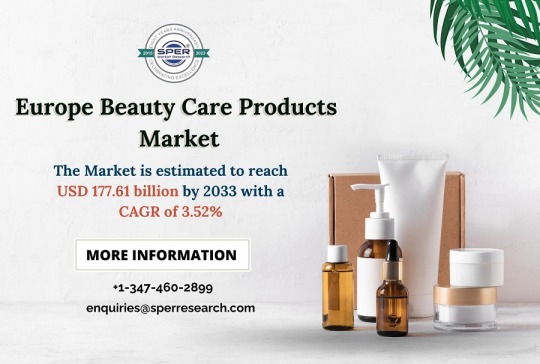
#Europe Beauty and Personal Care Products Market#Europe Beauty Care Products Market#Europe Beauty Care Products Market Challenges#Europe Beauty Care Products Market Growth#Europe Beauty Care Products Market Revenue#Europe Beauty Care Products Market segmentation#Europe Beauty Care Products Market Size#Europe Cosmetics Products Market#Europe Hair and Skin Care Market#Europe Herbal Beauty Products Market#Europe K-beauty Products Market#Europe Natural Skin Care Products Market#Europe Premium Cosmetics Market#Europe Skin Care And Hair Care Products Market#Europe Skin Care Products Market#Europe Skin Care Products Market Demand#Europe Skin Care Products Market Future Outlook#Europe Skin Care Products Market Report#Europe Skin Care Products Market Share#Europe Skin Care Products Market Trends#Europe Skincare Market#European Cosmetics Industry#Eye Cosmetic Products Market#Hair Care Products Market#Lip and Nail Make-up Products Market#Mass Beauty and Personal Care Products Market#Men Grooming Products Market#Personal Care Industry in Europe#Premium Beauty and Personal Care Products Market#Skin Care Products Manufacturers in Europe
0 notes
Text
https://cynochat.com/read-blog/176934_cosmetic-dentistry-market-analysis-size-share-and-forecast-2031.html
0 notes
Text
Cosmetics Market Growth Drivers: Beauty Trends and Changing Lifestyles
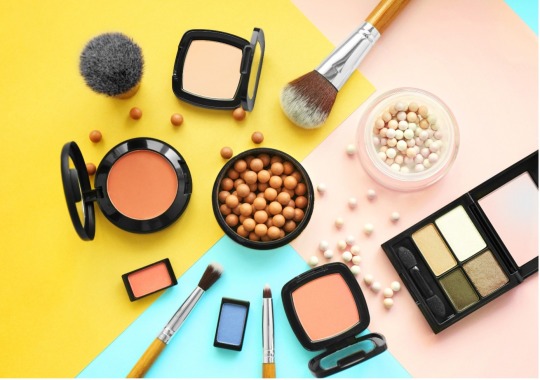

The cosmetics market stands as a testament to the ever-evolving nature of consumer preferences, technological advancements, and societal trends. From ancient civilizations utilizing natural ingredients for beauty enhancements to today's cutting-edge innovations in skincare and makeup, the cosmetics industry has witnessed remarkable transformations over the years.
In recent times, one of the most notable trends in the cosmetics market is the shift towards clean and sustainable beauty products. Consumers are increasingly conscious of the ingredients used in their skincare and makeup products, opting for natural, organic, and cruelty-free formulations. This growing awareness has led to the rise of numerous indie brands as well as established companies reformulating their products to meet these demands.
Moreover, inclusivity and diversity have become pivotal in shaping the cosmetics market. With calls for representation across various skin tones, genders, and identities, brands are expanding their shade ranges and marketing strategies to cater to a more diverse customer base. This inclusive approach not only fosters a sense of belonging among consumers but also reflects the changing dynamics of beauty standards worldwide.
Furthermore, technological advancements have revolutionized the way cosmetics are developed, marketed, and consumed. From augmented reality beauty apps that allow consumers to virtually try on makeup to personalized skincare solutions tailored to individual needs, technology has become deeply integrated into the cosmetics industry. This marriage of beauty and technology not only enhances the consumer experience but also opens up new avenues for innovation and creativity.
The rise of social media influencers and digital marketing has also had a profound impact on the cosmetics market. Platforms like Instagram, YouTube, and TikTok have become powerful tools for brands to showcase their products, engage with consumers, and drive sales. Influencers, with their large and loyal followings, wield significant influence over purchasing decisions, making collaborations and sponsored content a cornerstone of modern beauty marketing.
In addition to changing consumer preferences and technological advancements, the COVID-19 pandemic has catalyzed significant shifts in the cosmetics market. With lockdowns and social distancing measures in place, there has been a surge in demand for skincare products as consumers prioritize self-care rituals at home. On the other hand, the decline in social gatherings and events has led to a downturn in the sales of color cosmetics, such as lipstick and eyeshadow.
Looking ahead, the cosmetics market is poised for further transformation as sustainability, inclusivity, technology, and shifting consumer behaviors continue to shape its trajectory. Brands that can adapt to these changes, embrace innovation, and prioritize consumer needs are likely to thrive in this dynamic and competitive landscape. Ultimately, the cosmetics market serves as a reflection of society's evolving beauty ideals, values, and aspirations.
0 notes
Text
Unveiling the Powerhouses: Top Players in the Thriving Cosmeceuticals Market
Today, we delve into this dynamic market, unveiling the top players, analyzing their impact, and forecasting the exciting future that lies ahead. Buckle up, beauty enthusiasts and industry insiders, as we embark on a journey to explore the crème de la crème of the cosmeceutical industry.
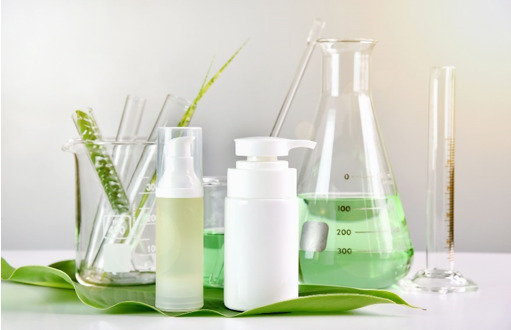
Market Landscape: Size, Share, and Growth Trajectory
The global cosmeceuticals market is a beauty behemoth, projected to reach a staggering US$58.3 billion by 2030, boasting a robust CAGR of 7.9%. This translates to millions of consumers worldwide embracing cosmeceuticals for their targeted benefits, blurring the lines between beauty and science.
Regional Dominance: Were Beauty Reigns Supreme
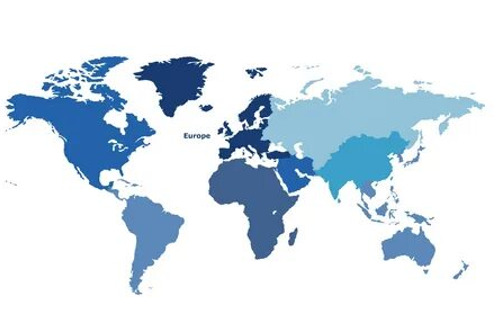
· The market has global appeal with regional variations
· Asia Pacific leads with a 40% share in 2023
· Dominance in Asia Pacific attributed to a booming middle class, rising disposable income, and interest in advanced skincare
· North America follows with a 35% share, driven by an established beauty industry and tech-savvy consumers
· Europe is in the top three with a 15% share, reflecting sophisticated taste and preference for premium brands
Market Movers and Shakers: The Who’s Who of Cosmeceuticals

L’Oréal: A global leader, offering an extensive portfolio of cosmeceuticals across various brands like La Roche-Posay, Vichy, and SkinCeuticals.
Estée Lauder: Renowned for its high-end brands like Clinique and Estée Lauder, catering to mature and premium skincare segments.
Shiseido: A Japanese giant focusing on advanced skincare technology and personalized beauty solutions.
Johnson & Johnson: A household name offering science-backed cosmeceuticals through brands like Neutrogena and Aveeno.
Beiersdorf: The makers of the iconic NIVEA brand, expanding into cosmeceuticals with targeted skincare solutions.
Challenges and Opportunities: Navigating the Beauty Landscape
Despite its promising outlook, the market faces certain hurdles:
Regulation and compliance: Stringent regulations can impact product development and market access.
Consumer skepticism: Misconceptions about cosmeceuticals require ongoing education and trust building.
Fierce competition: Standing out in a crowded market demands constant innovation and differentiation.
However, exciting opportunities abound:
Personalization: Customized cosmeceutical solutions based on individual needs and skin concerns are gaining traction.
Natural and organic ingredients: Consumers increasingly seek eco-friendly and sustainable options.
Technological advancements: AI-powered skin analysis and smart beauty devices are redefining the cosmeceutical experience.
Future Forecast: A Glimpse into the Crystal Ball

Market research experts predict a bright future for the cosmeceutical market, fueled by:
Rising demand for preventive skincare: Consumers are focusing on preventing future skin concerns rather than just treating them.
Integration with digital technologies: Online consultations, virtual try-ons, and personalized recommendations will enhance the shopping experience.
Focus on health and wellness: The link between skin health and overall well-being will drive demand for cosmeceuticals with functional benefits.
Unlocking Insights: Market Research Reports as Your Guide
Navigating the complex cosmeceutical market requires reliable data and insightful analyses. Market research reports by organizations like Ken Research offer valuable resources. These reports delve into market size, growth projections, regional trends, competitive landscapes, and emerging opportunities, empowering investors, brands, and industry stakeholders to make informed decisions and capitalize on the future of cosmeceuticals.
The Final Touch: More Than Just Beauty Essentials
The cosmeceuticals market is more than just about looking good; it’s about feeling good and taking control of your skin health. Understanding the top players, market trends, and future outlook equips you with the knowledge to navigate this exciting and ever-evolving industry.
#cosmeceuticals industry#cosmeceuticals market#cosmeceuticals market analysis#cosmeceuticals market future#cosmeceuticals market growth#cosmeceuticals market insights#cosmeceuticals market major players#cosmeceuticals market revenue#cosmeceuticals market share#cosmetics industry reports
0 notes
Text
The Splendid Canvas: Artistry in Premium Cosmetics Market Domains
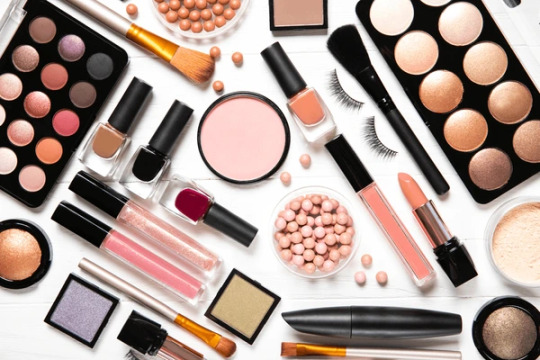
Premium cosmetics are products that are known for their distinguished fragrances and textures. They help enhance one's appearance and boost confidence. Premium cosmetic products include foundations, concealers, blushes, bronzers, eye makeup, lip makeup, nail polishes and others. These products are dermatologically tested and use premium quality ingredients like organic and mineral components that are gentle on skin. Premium cosmetic brands are focusing on product innovations to cater changing consumer preferences for natural and organic products.
The global Premium Cosmetics Market is estimated to be valued at US$ 123.39 Bn in 2024 and is expected to exhibit a CAGR of 6.1% over the forecast period 2023 to 2030, as highlighted in a new report published by Coherent Market Insights.
Market Opportunity:
Increased digital marketing and larger social media reach provides a key market opportunity for premium cosmetic brands. Today's consumers heavily rely on digital platforms and social media for reviews and recommendations before purchasing premium cosmetic products. Premium cosmetic brands can leverage this opportunity by ramping up their digital presence through innovative advertising campaigns, celebrity endorsements and influencer marketing on social media. They can build strong online communities to foster customer loyalty and engagement. Leveraging newer digital technologies allows premium brands to better understand customer preferences and tailor their marketing strategies accordingly to tap into the large online customer base.
Porter's Analysis
Threat of new entrants: The premium cosmetics market has high requirements for branding, product innovation and R&D. This makes it difficult for new brands to enter the market. However, high growth opportunities and rising demand could attract new players.
Bargaining power of buyers: Buyers have moderate to high bargaining power due to the availability of alternative brands. Many global brands have strong presence offering products across categories. Buyers can opt for alternative products easily.
Bargaining power of suppliers: Key raw materials used are common and available from multiple suppliers globally. This limits suppliers' bargaining power. However, suppliers of unique ingredients may wield some power.
Threat of new substitutes: Substitutes include mass-market cosmetics and organic/natural cosmetic ranges. However, premium brands create strong brand loyalty based on quality, uniqueness and prestige which offer few true substitutes.
Competitive rivalry: Rivalry is high among top brands that spend heavily on marketing, innovation and brand building. Intense competition exists to attract new consumers in dynamic Asian markets and developing economies.
SWOT Analysis
Strengths: Strong brand images, continuous innovation, high quality standards, effective celebrity endorsements, worldwide presence.
Weaknesses: Heavy reliance on seasonal products, vulnerable to economic downturns, pricing pressure from private labels, vulnerability to changing consumer preferences.
Opportunities: Untapped growth in Asia, digital/e-commerce expansion, niche premium product segments, organic/natural products.
Threats: Rising inflation and commodity costs, slow retail sector growth in developed markets, growing popularity of clean label mass-market products.
Key Takeaways
The global premium cosmetics market is expected to witness high growth supported by rising disposable incomes, increasing spending on beauty products, and growing popularity of cosmetics among male consumers. The global Premium Cosmetics Market is estimated to be valued at US$ 123.39 Bn in 2024 and is expected to exhibit a CAGR of 6.1% over the forecast period 2023 to 2030.
Regionally, the Asia Pacific market is estimated to register growth at the highest CAGR during 2023-2030 due to rising brand consciousness and fast growth of cities. Majority of the population in China, India, Vietnam, and Indonesia are under the age of 35, which is fueling demand for premium cosmetic brands in the region.
Key players operating in the premium cosmetics market are L'Oréal,Estée Lauder Companies,Procter & Gamble,Shiseido,Coty,Chanel,LVMH Moët Hennessy – Louis Vuitton,Kering,Unilever,Beiersdorf.
#Premium Cosmetics Market Share#Premium Cosmetics Market Growth#Premium Cosmetics Market Demand#Premium Cosmetics Market Trend#Premium Cosmetics Market Analysis
0 notes
Text
Anti-acne Cosmetics Market Marvels: Crafting a Radiant Future for Your Skin

Anti-acne cosmetics are facial care products designed to reduce acne breakouts and treat existing lesions. They include creams, lotions, gels and face washes containing ingredients like salicylic acid, benzoyl peroxide and tea tree oil that keep pores clear and fight bacteria.
Anti-acne Cosmetics Market is Estimated to Witness High Growth Owing to Rising Awareness About Skincare
The Anti-acne Cosmetics Market is estimated for 2023 for the forecast period 2023-2030, as highlighted in a new report published by Coherent Market Insights.
Market Dynamics:
Growing skincare awareness among millennials due to easy access to information on social media platforms is driving the anti-acne cosmetics market. According to various influencers and dermatologists promoting skincare, ingredients like salicylic acid and benzoyl peroxide are effective in clearing acne when used consistently for a few weeks. In addition, rising disposable incomes allow consumers to spend more on personal care products. Anti-acne cosmetic brands offer targeted solutions for various acne types and severity levels along with added features like oil-control. They promote their products through celebrity endorsements and digital campaigns, educating customers about skincare.
#Anti-acne Cosmetics Market Share#Anti-acne Cosmetics Market Growth#Anti-acne Cosmetics Market Demand
0 notes
Text
Unveiling Market Strategies: Anti-acne Cosmetics Industry Outlook

Anti-acne cosmetics include facial cleansers, creams, serums, toners, face masks and sunscreens that help control excessive sebum production and remove impurities from pores without aggravating acne. These products are widely used to treat and prevent acne by diminishing inflammation and slowing bacterial growth. The global anti-acne cosmetics market is estimated to be valued at US$ 2591.87 Mn in 2023 and is expected to exhibit a CAGR of 4.8% over the forecast period 2023 to 2030, as highlighted in a new report published by Coherent Market Insights.
Market Opportunity:
The opportunity of rising youth population is estimated to boost the growth of the anti-acne cosmetics market during the forecast period. According to the United Nations Population Fund, around 1.8 billion people were between the ages of 10 to 24 years in 2020 which accounted for approximately 23% of the global population. The prevalence of acne is high among individuals aged 12 to 24 years. Therefore, the increasing youth population worldwide is likely to drive the demand for effective anti-acne cosmetics such as facial cleansers, creams, lotions and masks over the next few years. The growing youth populace will raise awareness about numerous cosmetic products available in the market for controlling acne, thus propelling the anti-acne cosmetics market growth.
Porter's Analysis
Threat of new entrants: The threat of new entrants in moderate due to high R&D and branding costs required to enter the anti-acne cosmetics market.
Bargaining power of buyers: The bargaining power of buyers is high due to the presence of many established brands and product differentiation.
Bargaining power of suppliers: The bargaining power of suppliers is moderate as there are many ingredient suppliers and brands can switch to alternative suppliers.
Threat of new substitutes: The threat of new substitutes is moderate as there are few substitute products for anti-acne cosmetics.
Competitive rivalry: The competitive rivalry is high among the major brands.
SWOT Analysis
Strengths: Wide product ranges, strong brand loyalty, large distribution networks.
Weaknesses: High R&D and marketing costs, dependency on brands performance, commodity pricing.
Opportunities: Growing millennial population, rise in income levels in developing nations, new product innovations.
Threats: Stringent regulations, increasing raw material costs, slow economic growth.
Key Takeaways
The global anti-acne cosmetics market is expected to witness high growth driven by a rise in pollution levels, changing lifestyles, and growing beauty consciousness.
Regionally, North America is expected to dominate the market owing to a high number of acne cases and a growing teenage population in the US and Canada adopting anti-acne cosmetic products. Europe is also projected to account for a significant market share due to the high spending power and rising demand for natural and organic anti-acne products in countries like Germany, UK and France.
Key players operating in the anti-acne cosmetics market are Clinique Laboratories, LLC., Neutrogena, Ancalima Lifesciences Ltd., Guthy-Renker, Murad Inc, L'Oréal S.A., The Mentholatum Company Inc., Kosé Corporation, and Galderma Laboratories LP. Clinique Laboratories LLC. holds a leading market position due to its wide distribution network and specializedanti-acne skin care ranges for all skin types.
#Anti-acne Cosmetics Market Scope#Anti-acne Cosmetics Market Trend#Anti-acne Cosmetics Market Share#Anti-acne Cosmetics Market Outlook#Anti-acne Cosmetics Market Demand
0 notes
Text
The Ever-Evolving Cosmeceuticals Market Industry Insights
The cosmeceuticals industry, a fascinating blend of cosmetics and pharmaceuticals, has been experiencing phenomenal growth in recent years. Driven by rising consumer awareness, disposable incomes, and an aging population, this sector is projected to reach new heights in the years to come. But what exactly lies ahead for this dynamic market? Let’s delve deeper into the cosmeceuticals industry with some key questions:
What is the cosmeceuticals market size and growth potential?

The global cosmeceuticals market size was valued at USD 131.1 billion in 2023 and is expected to reach USD 240.2 billion by 2028, growing at a CAGR of 9.8% during the forecast period. This impressive growth trajectory is attributed to several factors, including:
Rising demand for anti-aging and skin rejuvenation products: Consumers are increasingly seeking cosmeceuticals to address concerns like wrinkles, fine lines, and age spots.
Growing awareness of the benefits of cosmeceuticals: With more information readily available, consumers are becoming more aware of the potential benefits of cosmeceuticals compared to traditional cosmetics.
Increasing disposable incomes: A rise in disposable incomes, particularly in emerging economies, is leading to increased spending on beauty and personal care products.
Shifting consumer preferences: Consumers are now more inclined towards natural and organic cosmeceuticals, driven by concerns about the safety of synthetic ingredients.
Who are the major players in the cosmeceuticals market?

L’Oréal
Estée Lauder Companies
Procter & Gamble
Johnson & Johnson
Shiseido
Allergan
Merz Aesthetics
Galderma
Valeant Pharmaceuticals
Beiersdorf
These companies are constantly innovating and developing new cosmeceutical products to cater to the evolving needs of consumers.
Where are the fastest-growing cosmeceuticals markets?
The Asia Pacific region is expected to be the fastest-growing cosmeceuticals market in the coming years, driven by factors such as a large and growing population, rising disposable incomes, and increasing awareness of the benefits of cosmeceuticals. Other regions with high growth potential include Latin America and the Middle East.
When will we see the next big innovation in cosmeceuticals?

The cosmeceuticals industry is constantly on the lookout for new and innovative ingredients and technologies. Some of the areas with promising potential include:
Personalized cosmeceuticals: Products tailored to individual skin types and concerns.
Biotechnology-derived ingredients: Ingredients derived from living organisms, such as stem cells and peptides, with potential anti-aging and skin-repairing properties.
Nanotechnology: The use of nanoparticles to deliver ingredients more effectively into the skin.
With continuous research and development, the future of cosmeceuticals looks bright, with exciting new possibilities waiting to be explored.
Why is the cosmeceuticals industry so important?
The cosmeceuticals industry plays a significant role in the overall beauty and personal care market. It provides consumers with products that offer both cosmetic and therapeutic benefits, addressing a wider range of concerns than traditional cosmetics. Additionally, the industry creates jobs, fosters innovation, and contributes to the global economy.
How can I stay updated on the latest trends in the cosmeceuticals industry?

Staying updated on the latest trends in the cosmeceuticals industry is essential for anyone involved in this dynamic sector. Here are some ways to do so:
Read industry publications and reports: Subscribe to industry newsletters and magazines to stay informed about the latest news, trends, and product launches.
Attend industry events and conferences: Attending industry events and conferences is a great way to network with other professionals and learn about the latest developments.
Follow cosmeceutical brands and influencers on social media: Many cosmeceutical brands and influencers share valuable insights and updates on social media.
By staying informed about the latest trends and developments, you can position yourself to succeed in the ever-evolving cosmeceuticals industry.
#cosmeceuticals industry#cosmeceuticals market#cosmeceuticals market analysis#cosmeceuticals market future#cosmeceuticals market growth#cosmeceuticals market insights#cosmeceuticals market major players#cosmeceuticals market revenue#cosmeceuticals market share#cosmetics industry reports
0 notes